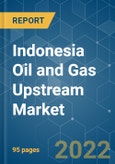- The crude oil segment is expected to dominate the market during the forecast period due to government initiatives to boost oil production.
- The depleting mature oil and gas fields create an opportunity for better avenues for exploration and production activities. The proved crude oil reserves stood at around 2.5 billion barrels in 2021, and the replacement rate for oil reserves dropped to 50% due to the lack of exploration activities in the recent past. Thus, the country urgently requires more E&P activities to meet the growing energy demand.
- The growing penetration of renewables for energy supply is likely to be the toughest restraint for the market over the coming years.
Key Market Trends
Crude Oil Segment Expected to Dominate the Market
- In Indonesia, the demand for crude oil has been continuously growing for the last ten years. The increasing energy consumption is attributed to the growth in oil demand. The country witnessed an energy consumption increment of 16% in the period 2010-2020. The crude oil share in the primary energy mix stood at 32% as of 2020, which was in second place after coal.
- The crude oil production in 2020 was around 708 thousand barrels per day, suggesting a downtrend from the previous year's figures. As per the oil demand data of the country, it has bucked out the supply levels. The oil demand in 2020 was around 1600 thousand barrels per day. To combat this challenging situation of the demand-supply gap, the country is making continuous endeavors to increase crude oil production.
- For instance, in 2021, an Indonesian task force called SKK Migas (the regulator that manages upstream oil and gas business activities) set a target of crude oil and condensates production of 705,000 b/d, but the production was around 667,000 b/d during the first five months, which was a failure on the part of the regulator. They now plan to drill around 1000 oil development wells per year by 2025, which is a part of the government’s target to produce 1 million b/d of crude oil and condensate by 2030.
- In February 2021, PC North Madura II Ltd, a subsidiary of Petronas, made an oil discovery at the Hidayah-1 exploration well located in the North Madura II production platform offshore in East Java, Indonesia. PC North Madura II Ltd is the sole operator in the North Madura II PSC with 100% participation interest. The project was also supported by SKK Migas and the local government of Kabupaten Sampang.
- Owing to such developments, the crude oil segment is expected to hold a significant share during the forecast period.
Growth of Renewables Expected to Restrain the Market
- Indonesia is blessed with significant renewable resource potential, particularly in the hydro, wind, and bioenergy industries. Solar and geothermal energy also have the scope to be effectively utilized in the country's primary energy supply.
- The share of renewables in the primary energy consumption of the country was around 14% in 2020, which included hydropower, bioenergy, geothermal, and other non-hydro renewables. The country set a target to achieve 23% of the renewables share in the consumption indicator. Thus, the government and the private sector are constantly taking concrete steps to accelerate renewable energy production.
- For example, in November 2021, Indonesia's Ministry of Energy and Mineral Resources and the International Renewable Energy Agency (IRENA) signed an agreement to enter a strategic partnership to identify ways to decarbonize the energy sector. The initiative came as a prospect to achieve the goal of reducing greenhouse gas emissions by 29% by 2030 and net-zero emissions by 2060 with international support and domestic policies.
- Furthermore, in September 2021, Toshiba Hydro Power (THPC) and PT Toshiba Asia Pacific Indonesia (TAPI) jointly clinched a contract to manufacture turbines for the upcoming hydropower plant, Kerinci Merangin power plant, located at Sumatra Island in Indonesia. The 420 MW power plant will be operated by PT Kerinci Merangin Hidro (KMH). The companies are likely to deliver the equipment by 2023, and the project is expected to be in service by 2025.
- Such developments are expected to restrain the Indonesian oil and gas upstream market’s growth over the forecast period.
Competitive Landscape
The Indonesian oil and gas upstream market is moderately consolidated. Some of the key players in the market include Chevron Corporation, ExxonMobil Corp., PT Pertamina Persero, Energi Mega Persada Tbk PT, and CNOOC Ltd, among others.
Additional Benefits:
- The market estimate (ME) sheet in Excel format
- 3 months of analyst support
This product will be delivered within 2 business days.
Table of Contents
Companies Mentioned (Partial List)
A selection of companies mentioned in this report includes, but is not limited to:
- Chevron Corporation
- ExxonMobil Corp.
- PT Pertamina Persero
- Energi Mega Persada Tbk PT
- CNOOC Ltd
- Indrillco Group
- Black Platinum Energy Ltd
- Petroliam Nasional Berhad (Petronas)








